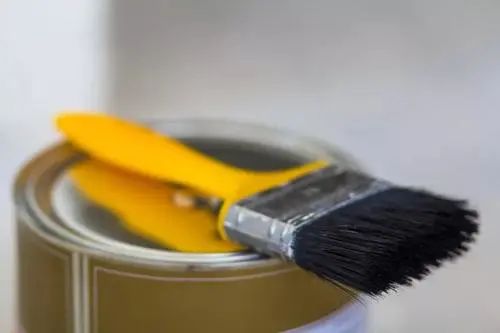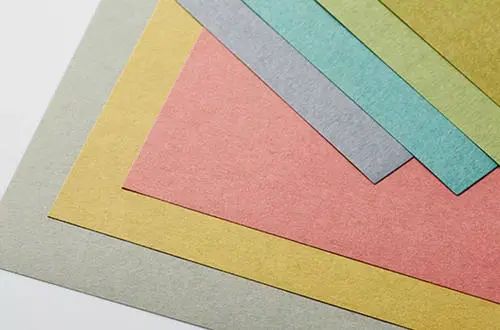The widespread cooling has affected not only everyone's travel, but also the production of printing processes due to the low temperature weather. So, in this low temperature weather, what details should be paid attention to in packaging printing? Today, Hongze will share with you the details that need to be paid attention to in the printing and packaging process in low temperature weather~
01
Preventing Thickening of Rotary Offset Printing Ink
For ink, if there is a significant change in the room temperature and the liquid temperature of the ink, the ink flow state will change, and the color tone will also change accordingly.
At the same time, low temperature weather will have a significant impact on the ink transfer rate in high light areas. Therefore, when printing high-end products, it is necessary to control the temperature and humidity of the printing workshop no matter what. In addition, when using ink in winter, it is necessary to preheat it in advance to reduce the temperature changes of the ink itself.

Note that at low temperatures, the ink is too thick and has a high viscosity, but it is best not to use diluents or inking oil to adjust its viscosity. Because when users need to adjust ink properties, the total amount of various additives that can be accommodated in the raw ink produced by ink manufacturers is limited, exceeding the limit. Even if it can be used, it weakens the basic performance of the ink and affects printing quality and printing technology.
The phenomenon of ink thickening caused by temperature can be solved by the following methods:
1) Place the original ink on the radiator or next to the radiator, slowly heating it up and gradually returning to its original state.
2) When in urgent need, hot water can be used for external heating. The specific method is to pour the hot water into the basin, and then place the original bucket (box) of ink in the water, but to prevent water vapor from soaking. When the water temperature drops to around 27 degrees Celsius, take it out, open the lid, and stir evenly before use. The temperature of the printing workshop should be maintained at around 27 degrees Celsius.
02
Using antifreeze UV varnish
UV varnish is also a material that is easily affected by low temperatures, so many suppliers specialize in producing two different formulations: winter and summer. The solid content of the winter formula is lower than that of the summer formula, which can improve the leveling performance of the varnish when the temperature is low.
Note that if the winter formula is used in summer, it is easy to cause incomplete oil solidification, which can lead to anti sticking and other phenomena; On the contrary, using summer formulas in winter can cause poor UV oil leveling performance, resulting in foaming and orange peel failure.
03
The Impact of Low Temperature Weather on Paper
In printing production, paper is one of the consumables with extremely high requirements for environmental temperature and humidity. Paper is a porous material with a basic structure composed of plant fibers and auxiliary materials, which has strong hydrophilicity. If the environmental temperature and humidity are not well controlled, it can cause paper deformation and affect normal printing. Therefore, maintaining appropriate environmental temperature and humidity is the key to improving the quality of paper prints and improving production efficiency.

The environmental temperature requirements for ordinary paper are not so obvious, but when the environmental temperature is below 10 ℃, ordinary paper will become very "brittle", and the adhesion of the ink layer on its surface will decrease during the printing process, which is easy to cause deinking.
Gold and silver card paper is usually produced from copper coated paper, white board paper, white cardboard, and other materials, and then compounded with PET film or aluminum foil.
Gold and silver card paper has higher requirements for environmental temperature because both metal and plastic materials are very sensitive to temperature changes. When the environmental temperature is below 10 ℃, it will greatly affect the suitability of gold and silver card paper. When the storage environment temperature of gold and silver card paper is around 0 ℃, after being transported from the paper warehouse to the printing workshop, a large amount of water vapor will appear on its surface due to the temperature difference, affecting normal printing and even leading to waste products.
If encountering the above problems and the delivery time is tight, the staff can first open the UV lamp tube and let the paper run empty once, so that its temperature is balanced with the ambient temperature before formal printing.
In addition, low temperature drying, low relative humidity, and moisture exchange between paper and air can cause paper to dry, warp, and shrink, resulting in poor overprinting.
04
The Effect of Low Temperature on Adhesive Adhesives
Adhesive is an important chemical agent in industrial production today, and its performance directly affects the quality of industrial products.
An important technical indicator in adhesive production is temperature control. The raw materials of adhesives are mostly organic polymers, which have a high dependence on temperature. This means that their mechanical properties and viscoelasticity are affected by temperature changes. It should be pointed out that low temperature is the main culprit causing false adhesion of adhesive.
When the temperature drops, the hardness of the adhesive hardens, changing the stress effect at the adhesive. In the opposite low-temperature state, the movement of polymer chains in the adhesive is limited, reducing its elasticity.
Post time: Nov-11-2023






